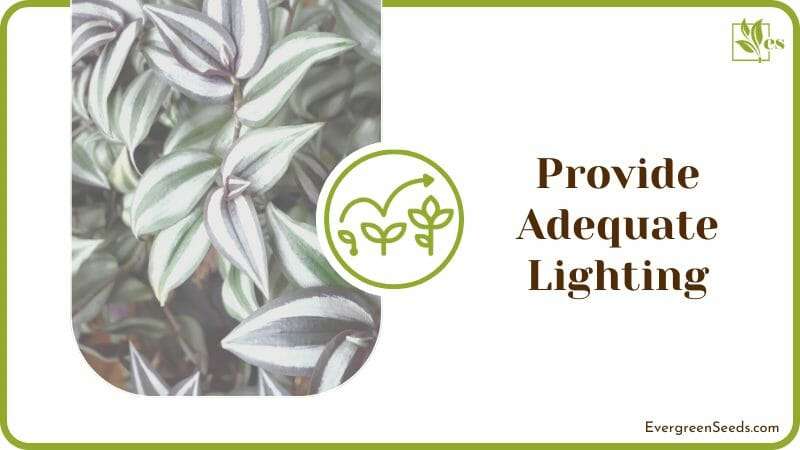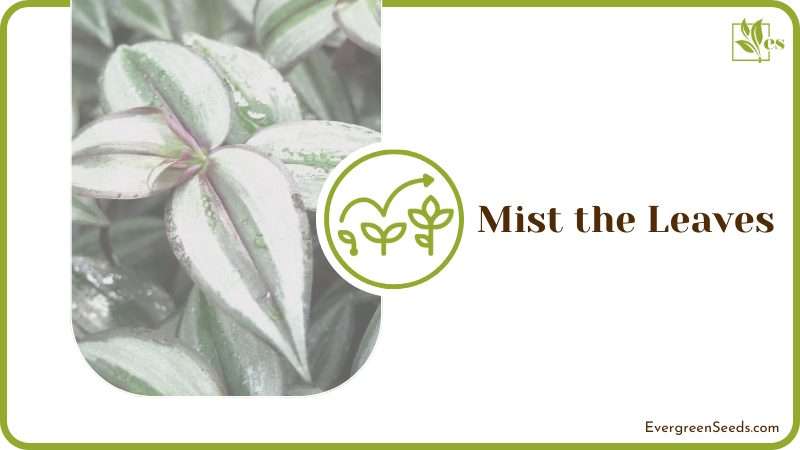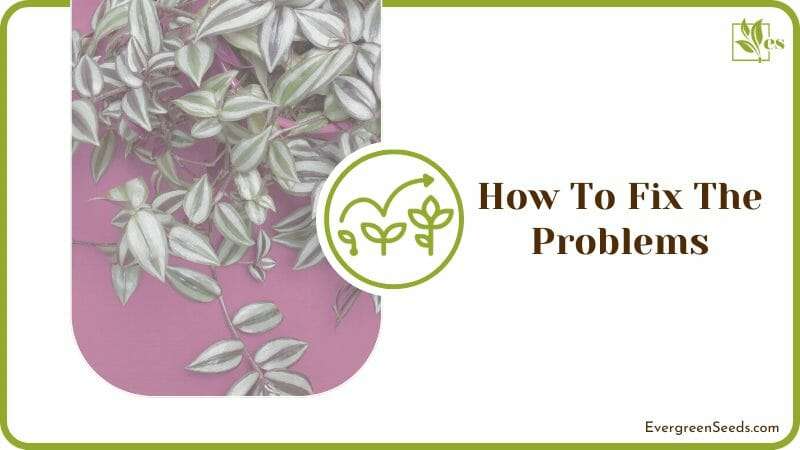If you are wondering how to make Wandering jew bushy and your plant is looking leggy, you can do a few things to help it become bushier.

Our following guide will help you learn more about your wonderful plant of the Commelinaceae family and will assist you in meeting its care requirements.
After that, we will also share tips and tricks to make your Wandering jew plant bushy. By following these tips, you can help your Wandering jew plant from the Tradescantia genus thrive.
How to Make Wandering Jew Bushy
If your plant is looking leggy, you can do a few things to encourage bushier growth. Pruning your plant back will help it to become more compact and bushy.
You can also try using grow lights to give your plant the extra light. Finally, repotting your plant in a pot that is one size larger can also help encourage bushier growth. Good companion plants for wandering Jew might also help it to become more bushy.
The Wandering jew or the Tradescantia zebrina is a perennial plant that grows in the Mediterranean basin.
It is a deciduous shrub with large leaves and small, blue flowers. It is native to the Mediterranean region and was first introduced to Europe by sailors. The name Wandering jew comes from the fact that it does not seem to stay put in one place for long periods.
The plant grows slowly but can reach up to 16 feet tall with enough sunlight and water. If you want to watch your lovely plant grow healthy and bushy, follow the steps outlines below for success.
– Use a Good Fertilizer
The first thing is to ensure the soil is well cleaned before planting the plant. There are many different ways of putting fertilizer in your plant.
This way, you do not have to worry about damaging your plants if your yard is not in an area that gets enough oxygen. For this reason, you should think of doing this before planting a plant.
The best fertilizer for plants is water-soluble, so it can rapidly move into the soil where it needs to be to provide nutrients to the plant. Here are some suggestions for you.
- Use natural fertilizers like compost, manure, or liquid organic fertilizers.
- Improve soil with fish or bone meal.
- Use slow release fertilizers.
- Add dry leaves as mulch for additional nutrients.
– Prune the Tree
One way to encourage bushier growth in your plant is to prune it. You can trim off the droopy growth with sharp pruning shears.
Make sure to make your cuts just above a node, where new leaves and stems will grow. Pinch back the branches of your plant now and then to encourage it to grow sideways rather than up.
You can also cut leggy stems by a few inches to promote bushier growth. There is another technique frequently used by gardeners called pinching. Pinch new growth with your hand during the growing season.
It encourages the plant to send out shoots in different directions and, as a result, makes the plant bushier.
– Provide Adequate Lighting for Bushier Growth
Another way to encourage bushier growth in your plant is to give adequate lighting. Place your plant in an area that gets bright, indirect light for best results. You can also try using grow lights to provide your plant with extra light and help it thrive.

Grow lights come in various types, so make sure to choose one that is best suited for your plant. You can use them to supplement your plant’s light from the sun.
– Repot the Plant for Bushier Growth
If your plant is looking leggy due to being pot-bound, one way to encourage bushier growth is to repot it in a larger pot. When you repot the plant, it will make them strong for growing straight and allow the plant’s roots to spread out more freely.
With regular care and attention, your plant should be able to thrive and become bushier over time. Make sure to be extra gentle with your plant while repotting, as they can be vulnerable when their roots are exposed. When you are repotting, make sure:
- You repot during the growing season.
- The pot is 1.5 inches bigger than the previous one and not too big.
- Repot into fresh soil.
- The pot must have drainage holes.
– Provide Adequate Watering
Another way to encourage bushier growth in your plant is to water it properly. Water your plant only when the soil is dry to the touch.
Be sure to not over-water the plant as this can lead to droopy growth. When you water the plant, make sure to water it thoroughly so that the water reaches the plant’s roots.
– Planting Arrangements
To encourage bushy growth in your plant, you may also want to consider planting it in a group. It will help the plant grow more densely and become bushier over time.
When planting in a group, make sure to space the plants out to have room to grow. You can also try planting your wandering jew plant in a hanging basket to encourage it to grow downwards.
– Mist the Leaves
One of the easiest ways to prevent long weak growth is to mist the leaves regularly. It will help increase the humidity in the environment and keep the plant looking lush and healthy.

Simply use a spray bottle and spray two or three times a day on the leaves.
– Use a Pebble Tray
Another way to avoid extra long growth in an Inch plant is to use a pebble tray. A pebble tray is a simple way to create a false bottom for your pot. When you water your plant, the water will flow over the rocks and into the soil.
It will help the soil stay moist and encourage the roots to grow down instead of spreading out across the soil’s surface.
– Change the Plant’s Location
Long, weak growth is a common problem with the Inch plant. To avoid this, you can try changing your plant’s location. If your plant is located in a low-light area, move it to a spot that will receive more sunlight.
If your plant receives too much sun, move it to a shadier spot. You can also try pruning your plant more often to keep it compact.
– Propagate in Water or Soil
The process of propagating a Wandering jew is slightly more involved than propagating a cutting in water. Simply cut the leaves and stem from the lower part of the plant’s body. You can propagate the plant by putting the cutting parts in a pot.
– Planting in Water
Wandering jew plants are not able to live in water forever. You can take the cutting of the plant in a vase and let them grow. However, if you often change the water, the plant might live up to several weeks.
Inch plants can live in water for a few weeks! In fact, they are one of the easiest plants to grow, and they don’t require a lot of maintenance. Here are a few tips on how to care for inch plants:
- Make sure the water is fresh and clean.
- Place the pot in a sunny spot.
- Change the water every two days.
How To Prevent
There are a few reasons why your plant might be leggy. One reason is the lack of light. If your plant is unable to get enough light, it will start to stretch out in an attempt to reach the light source.
Another reason for leggy growth is over-watering. When plants are overwatered, they can begin to stretch out and become leggy. Finally, if your plant is pot-bound, it will also grow in a leggy manner.
– Avoid High Temperatures
These plants grow better in cool temperatures, and when the temperature is higher than 50 degrees Fahrenheit, plants are most likely to grow leggy.

The plant needs optimum temperatures to create a strong stem and produce leaves, but at high temperatures, plants lose their leaves and the loss of nutrients causes droopy growth.
– Provide Adequate Light
Lack of light will cause the plant to become leggy as it stretches out towards the light source. To prevent this, place your plant in an area that gets bright, indirect light.
If your plant is located in an area that doesn’t receive natural bright light, you can also try using grow lights to give your plant an extra boost of light.
– Improve Soil Quality
To fix these problems, you need to apply some chemical fertilizers or add organic matter on top of your garden soil to fill these gaps to improve its quality and keep your plants healthy in the future. The chemicals used for this purpose are very harsh on plants, so they should be applied in a very small quantity.
– Avoid Overwatering
When plants are overwatered, they can start to stretch out and become leggy. It is because the plant’s roots are suffocating, and the plant is trying to get more oxygen. Overwatering can also lead to root rot and other harmful diseases.
To avoid overwatering, water your plants only when the soil is completely dry to the touch. Always grow Wandering jew plants in a well-draining soil mixture.
– Pot-bound Plants Lead to Droopy Growth
If your Tradescantia zebrina plant is pot-bound, it will also start to grow in a leggy manner. It is because the plant’s roots are constricted, and the plant is trying to get more space. To prevent this, repot your plant in a pot that is one size larger.
– Remove Pests
Pests can also cause droopy growth in plants. The pests are sucking the nutrients out of the plant, causing it to become stunted. To prevent this, keep an eye out for pests and treat them accordingly.
How To Fix The Problems
Here are some common problems that this plant experiences and how to fix them.
– Remove Fading Leaves
If you notice that your plant’s leaves are turning to fade, this may be due to a lack of light. To encourage new, healthy growth in your plant, make sure to provide it with the proper amount of sunlight and moisture.
You can also trim any yellowing or drooping leaves to promote new growth.

– Manage Yellowing Leaves and Stem Rot
If you notice that your plant’s leaves are yellowing, this may be due to extra water in the soil or not enough light requirements. Ensure to water your plant only when the soil is dry and provide it with bright, indirect light. You can also try trimming back any yellow leaves to encourage new growth.
– Cure Droppings and Curling Leaves
If you notice that your plant’s leaves are drooping or curling, this may be due to too little water. Make sure to water your plant regularly and provide it with bright, indirect light. You can also try trimming back any yellowing or drooping leaves to encourage new growth.
– Avoid Pests and Diseases
If you notice any pests or diseases affecting your plant, it is essential to deal with them right away. Some common pests and conditions that may affect your plant include mealybugs, spider mites, root rot, and stem rot. To get rid of these pests or diseases, make sure to use appropriate pesticides or fungicides as needed.
You can also use natural methods such as neem oil or organic compost to help combat pests and diseases in your plant. With proper care, your plant should be able to thrive and become bushier over time.
Final note:
If you take care of the Jew plant properly, it can live up to 3-4 years without any problems. Plants are subject to a lot of harsh weather conditions. You should protect them from the harsh winds that can harm them.












